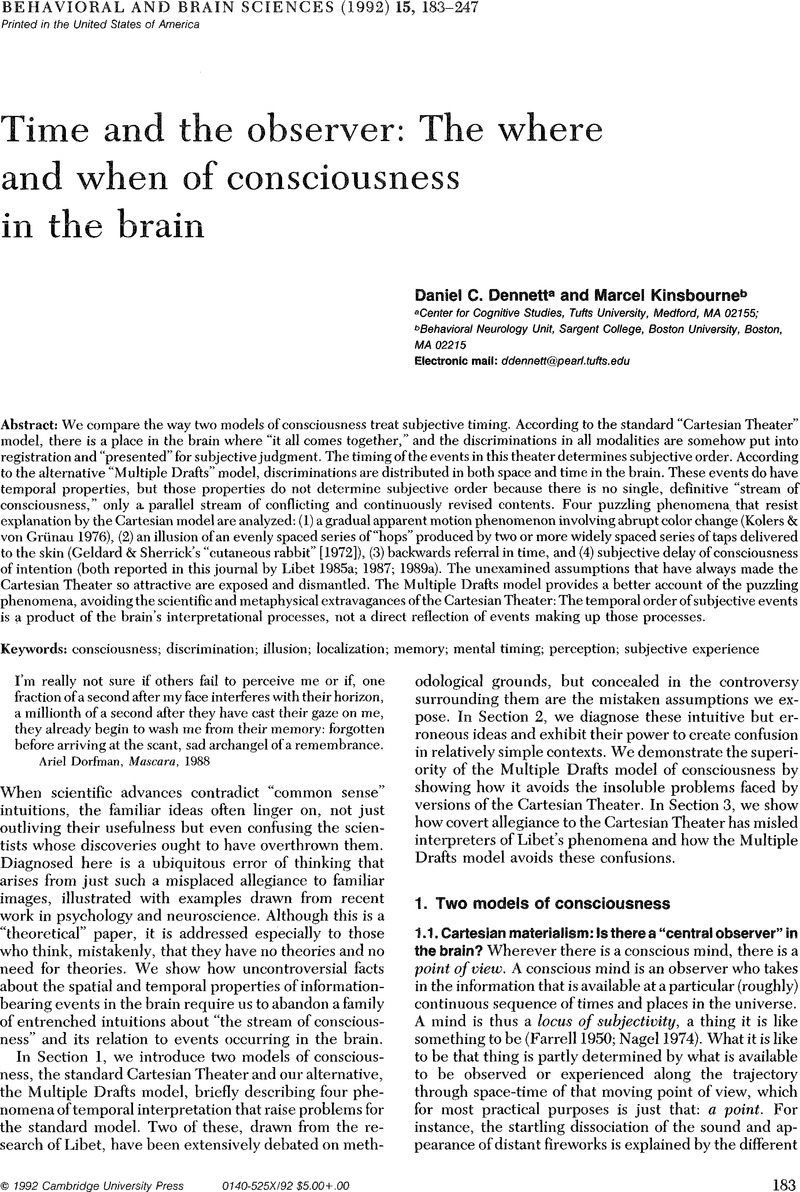Crossref Citations
This article has been cited by the following publications. This list is generated based on data provided by Crossref.
AKINS, KATHLEEN
1996.
Lost the Plot? Reconstructing Dennett's Multiple Drafts Theory of Consciousness.
Mind & Language,
Vol. 11,
Issue. 1,
p.
1.



